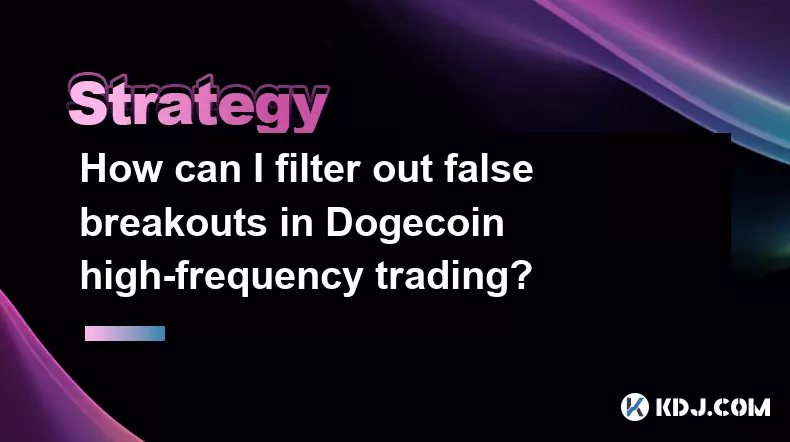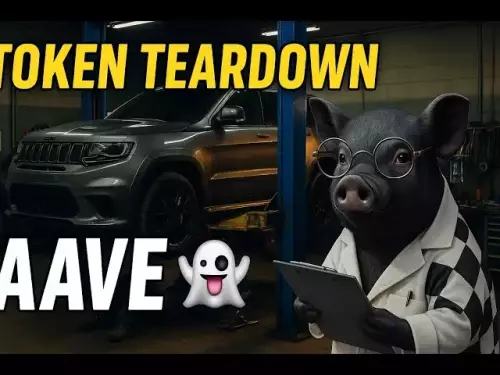-
 bitcoin
bitcoin $112195.049338 USD
2.42% -
 ethereum
ethereum $4124.915858 USD
2.81% -
 tether
tether $1.000570 USD
0.02% -
 xrp
xrp $2.861568 USD
2.25% -
 bnb
bnb $1000.346670 USD
3.04% -
 solana
solana $209.070819 USD
3.38% -
 usd-coin
usd-coin $0.999870 USD
0.02% -
 dogecoin
dogecoin $0.235379 USD
2.65% -
 tron
tron $0.335681 USD
-0.20% -
 cardano
cardano $0.803501 USD
3.38% -
 hyperliquid
hyperliquid $47.120881 USD
3.56% -
 chainlink
chainlink $21.501300 USD
3.44% -
 ethena-usde
ethena-usde $1.000571 USD
0.02% -
 avalanche
avalanche $29.793378 USD
3.62% -
 stellar
stellar $0.366964 USD
2.42%
What should I do if a Bitcoin double top pattern breaks below its neckline?
A Bitcoin double top breakdown signals bearish reversal, with neckline break confirmed by volume and momentum shifts, often leading to significant downside.
Sep 20, 2025 at 04:00 pm

Understanding the Bitcoin Double Top Breakdown
1. A double top pattern is a bearish reversal formation that appears after an extended uptrend. It consists of two consecutive peaks at approximately the same price level, with a trough in between forming the neckline. When price action breaks below this neckline, it confirms the bearish signal.
2. Traders should treat the break below the neckline as a strong indication of weakening bullish momentum. This breakdown often reflects a shift in market sentiment from optimism to caution or fear, especially if accompanied by high trading volume.
3. The measured move objective can be estimated by measuring the vertical distance from the peak to the neckline and projecting it downward from the breakout point. For example, if the top is at $70,000 and the neckline sits at $60,000, the projected downside target would be $50,000.
4. Immediate reaction should include reviewing open long positions. Holding onto leveraged longs after confirmation of the breakdown increases risk exposure significantly, particularly in volatile crypto markets where cascading liquidations may accelerate the drop.
Confirm Volume and Momentum Shifts
1. A valid breakdown requires confirmation through elevated selling volume. Low-volume breaks may result in false signals or temporary dips followed by recovery. Monitoring on-chain metrics like exchange inflows and whale movements can add context to the selling pressure.
2. Use momentum indicators such as the Relative Strength Index (RSI) and Moving Average Convergence Divergence (MACD) to assess whether bearish momentum is building. RSI dropping below 50 and MACD lines crossing below zero suggest strengthening downtrend conditions.
3. Watch for increased put option activity on derivatives exchanges like Deribit. A spike in put/call ratios often aligns with institutional anticipation of further downside, reinforcing retail traders’ bearish bias.
4. On-chain data tools like Glassnode can reveal whether long-term holders are starting to distribute their holdings. Rising supply on exchanges combined with declining active addresses supports a narrative of weakening demand.
Risk Management After the Neckline Break
1. Set stop-loss orders just above the neckline to minimize losses if the breakdown fails and price reverses. Tight risk parameters help preserve capital during uncertain transitions.
2. Consider scaling into short positions using futures or perpetual swaps only after multiple time frame confirmation. Ensure higher time frames like daily and 4-hour charts align with the bearish structure before entering.
3. Avoid averaging down on long positions. The psychological tendency to 'buy the dip' too early can lead to significant drawdowns when structural reversals occur. Wait for clear signs of stabilization or trend exhaustion.
4. Allocate a portion of portfolio value to stablecoins temporarily. This provides dry powder for potential entries at more favorable levels while reducing exposure during heightened volatility.
Historical Precedents in Bitcoin Market Structure
1. In 2019, Bitcoin formed a double top around $14,000 before dropping below the $11,000 neckline, eventually correcting to $3,800. Traders who respected the breakdown avoided substantial losses despite the sharp nature of the decline.
2. During late 2021, BTC reached nearly $69,000 twice before failing to push higher. The subsequent fall below the $56,000 neckline triggered a prolonged bear market extending into 2023, wiping out over $2 trillion in market capitalization.
3. These events illustrate how technical patterns, when combined with macro factors like regulatory shifts and liquidity tightening, amplify downside moves. Pattern recognition alone isn’t sufficient—context matters deeply.
4. Historical retests of broken necklines often occur weeks or months later. Former support turning into resistance offers strategic zones for renewed selling pressure or failed recovery attempts.
Frequently Asked Questions
What is the typical timeframe for a double top pattern to complete?The duration varies widely. Some double tops form over several weeks, while others take months to develop. Shorter patterns on lower timeframes like 4-hour charts may lack reliability compared to those visible on weekly candles.
Can a double top breakdown be reversed?Yes, though less common. If buying pressure returns swiftly and price recaptures the neckline with strong volume, the bearish signal becomes invalidated. However, such reversals usually require fundamental catalysts like positive regulatory news or ETF approvals.
Should I use leverage after a neckline break?Extreme caution is advised. While the temptation to amplify gains exists, Bitcoin’s volatility means even valid breakdowns can experience violent counter-trend rallies. Conservative position sizing and minimal leverage reduce blowup risk.
How does on-chain data complement technical analysis in this scenario?Metrics like MVRV ratio, SOPR, and exchange reserves provide insight into whether investors are realizing profits or accumulating. Declining reserves coupled with rising SOPR post-breakdown suggest capitulation, increasing confidence in continued downside.
Disclaimer:info@kdj.com
The information provided is not trading advice. kdj.com does not assume any responsibility for any investments made based on the information provided in this article. Cryptocurrencies are highly volatile and it is highly recommended that you invest with caution after thorough research!
If you believe that the content used on this website infringes your copyright, please contact us immediately (info@kdj.com) and we will delete it promptly.
- Navigating Misinformation: Ensuring Safety in the Pi Network Ecosystem
- 2025-09-29 14:25:13
- XRP Price Prediction: September 29th's Crypto Comeback?
- 2025-09-29 14:25:13
- Polkadot vs. Lyno AI: Decoding the Price Forecast and AI Revolution
- 2025-09-29 14:30:01
- Trump's Brahmastra: Can Stable Coin Save the US Economy?
- 2025-09-29 14:45:17
- Pi Movement: Utility, Community, and the $314,159 Dream
- 2025-09-29 14:45:17
- Ruvi AI: Revolutionizing the Creator Economy with AI-Powered Crypto
- 2025-09-29 14:30:01
Related knowledge

Practical parameter settings for a Bitcoin multi-timeframe moving average system
Sep 18,2025 at 10:54pm
Optimizing Timeframe Combinations for Bitcoin Trading1. Selecting appropriate timeframes is crucial when building a multi-timeframe moving average sys...

How can I filter out false breakouts in Dogecoin high-frequency trading?
Sep 22,2025 at 01:00am
Understanding False Breakouts in Dogecoin Trading1. A false breakout occurs when Dogecoin's price appears to move beyond a defined support or resistan...

Techniques for identifying tops and bottoms in the Bitcoin on-chain NVT model
Sep 20,2025 at 07:54pm
Understanding the NVT Model in Bitcoin Analysis1. The Network Value to Transactions (NVT) ratio is often described as the 'P/E ratio' of the cryptocur...

What does the surge in open interest in Bitcoincoin futures mean?
Sep 20,2025 at 11:18pm
Understanding the Surge in Dogecoin Futures Open Interest1. A surge in open interest within Dogecoin futures indicates a growing number of active cont...

How can I use the Ethereum USDT premium to gauge market sentiment?
Sep 18,2025 at 11:55pm
Understanding the Ethereum USDT Premium1. The Ethereum USDT premium refers to the price difference between USDT (Tether) traded on Ethereum-based plat...

What should I do if Ethereum staking yields decline?
Sep 20,2025 at 06:18am
Understanding the Causes Behind Declining Ethereum Staking Yields1. The Ethereum network transitioned to a proof-of-stake consensus mechanism with the...

Practical parameter settings for a Bitcoin multi-timeframe moving average system
Sep 18,2025 at 10:54pm
Optimizing Timeframe Combinations for Bitcoin Trading1. Selecting appropriate timeframes is crucial when building a multi-timeframe moving average sys...

How can I filter out false breakouts in Dogecoin high-frequency trading?
Sep 22,2025 at 01:00am
Understanding False Breakouts in Dogecoin Trading1. A false breakout occurs when Dogecoin's price appears to move beyond a defined support or resistan...

Techniques for identifying tops and bottoms in the Bitcoin on-chain NVT model
Sep 20,2025 at 07:54pm
Understanding the NVT Model in Bitcoin Analysis1. The Network Value to Transactions (NVT) ratio is often described as the 'P/E ratio' of the cryptocur...

What does the surge in open interest in Bitcoincoin futures mean?
Sep 20,2025 at 11:18pm
Understanding the Surge in Dogecoin Futures Open Interest1. A surge in open interest within Dogecoin futures indicates a growing number of active cont...

How can I use the Ethereum USDT premium to gauge market sentiment?
Sep 18,2025 at 11:55pm
Understanding the Ethereum USDT Premium1. The Ethereum USDT premium refers to the price difference between USDT (Tether) traded on Ethereum-based plat...

What should I do if Ethereum staking yields decline?
Sep 20,2025 at 06:18am
Understanding the Causes Behind Declining Ethereum Staking Yields1. The Ethereum network transitioned to a proof-of-stake consensus mechanism with the...
See all articles










































































